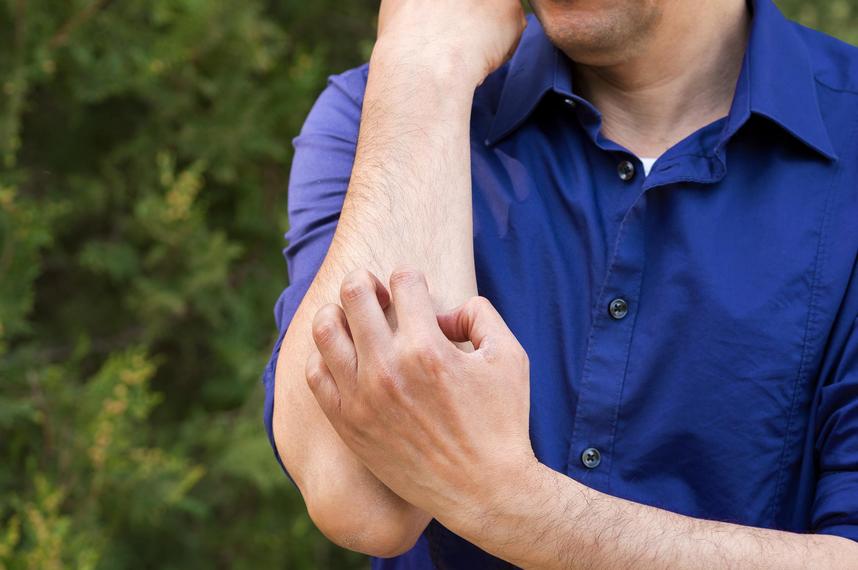Identification
If you can identify a poisonous plant, it is much easier to avoid. However, poisonous plants change appearance as the seasons change, and there are different varieties which can make it difficult to recognize. If you are an outdoor enthusiast, learning how to identify each plant will help prevent exposure to them.
Poison Ivy can grow practically anywhere as a vine or small shrub that creeps across the ground and climbs on low plants, trees and poles. It never has more than three leaflets in a grouping and the groupings are arranged alternately on the main stem. The leaves are not always shiny and they can have a smooth or jagged edge. They can have a notched pattern, but some do not. White or pale-yellow flowers and white berries appear when the plant is in bloom. Poison ivy leaves are usually red in the spring, green in summer and transform into shades of yellow, orange, or red in the fall.
Poison Oak grows as a low shrub and in tall clumps or long vines similar to poison ivy, but the leaves are textured with a hairy or fuzzy appearance notched with rounded tips more like an oak leaf. In salt water areas, the leaves curl and look waxy. The leaves are always in clusters of three alternating on the main stem. In the spring, the leaves can be green or red and the plant bears white, yellow or green flowers. In the summer, the leaves are green and the plant produces clusters of berries. The leaves change color again in late summer to red and orange.
Poison Sumac grows as a tall shrub in wetland areas such as swamp and pond shorelines. Some varieties are poisonous and some are not. Poisonous sumac has white or grayish green berries. The stems are red and each stem has clusters of five to thirteen smooth-edged leaflets always with one lone leaflet at the tip. Clusters are always in odd numbers. Leaves are orange in the spring, green in the summer, with variations of yellow, orange, and red in the fall. It may have yellow-green flowers and white-green fruits that hang in loose clusters. All parts of sumac are poisonous.
Symptoms
When bare skin comes into contact with one of these poisonous plants, the first physical symptom to occur is itching. It may occur immediately or from a few hours to several days after exposure and is typically followed by a red rash and blisters. The rash will only occur where the plant oil has touched the skin. Typically, a rash will disappear within a few weeks.
Prevention
- Learn how to identify these poisonous plants.
- Wear long sleeves, long pants, socks, shoes, and gloves when you have potential exposure to poisonous plants.
- Wash tools or equipment that has come in contact with a poisonous plant.
- Wash your pet if it may have come in contact with a poisonous plant. Pets do not react to these plants, but the oil can linger on their fur until washed off.
Poison plant rashes are not contagious
A poison plant rash cannot be spread from person to person, but it can be picked up from plant oil that may have stuck to clothing, pets, garden tools, or other objects that may have come into contact with the plant oil. The plant oil will stay on virtually any surface until it is washed off with water or rubbing alcohol.
People often assume that poison ivy spreads by scratching itchy skin, however it does not. Either the plant oil has absorbed at a different rate on parts of the body, exposure to contaminated objects has occurred, or plant oil has been trapped under the fingernails from scratching which has been released to other areas of the skin. Even the fluid extracted from blisters when they break cannot further spread the rash, however the potential risk for bacterial infection can arise by itching open blisters.
Treatment – Stop the itch
A rash can last a week to several weeks. The temptation to scratch the itch is strong and worsens as the rash progresses and blisters. Controlling the urge to scratch will help promote a speedy recovery.
- Wash exposed skin with a mild soap and cool water as soon as possible if skin has come in contact with a poisonous plant. Avoid harsh cleansing agents that may irritate skin.
- Soak affected skin in cool water or use cool, wet compresses.
- Apply over-the-counter (OTC) topical corticosteroids, such as hydrocortisone, to help prevent and relieve itching and inflammation as soon as possible.
- Apply topical OTC skin protectants such as zinc acetate, zinc carbonate, zinc oxide, or calamine to dry oozing and weeping of blisters.
- Use fragrance-free, mild and gentle skin care products. Itchy, inflamed skin may be sensitive to common chemical irritants found in skin cleansers, moisturizers, and sunscreens.
Consult a doctor if
- you have a temperature over 100 F
- skin becomes infected and there is pus, soft yellow scabs or tenderness
- the itching gets worse and keeps you awake at night
- the rash spreads to eyes, mouth, genitals, or covers more than ¼ of your skin area
- the rash does not improve within a few weeks
- you have difficulty breathing
Warning
Before removing or disposing poisonous plants, consider getting professional advice. Never burn poisonous plants or vines. The oil disperses in smoke and can lead to respiratory problems.
Ref. www.poison-ivy.org
